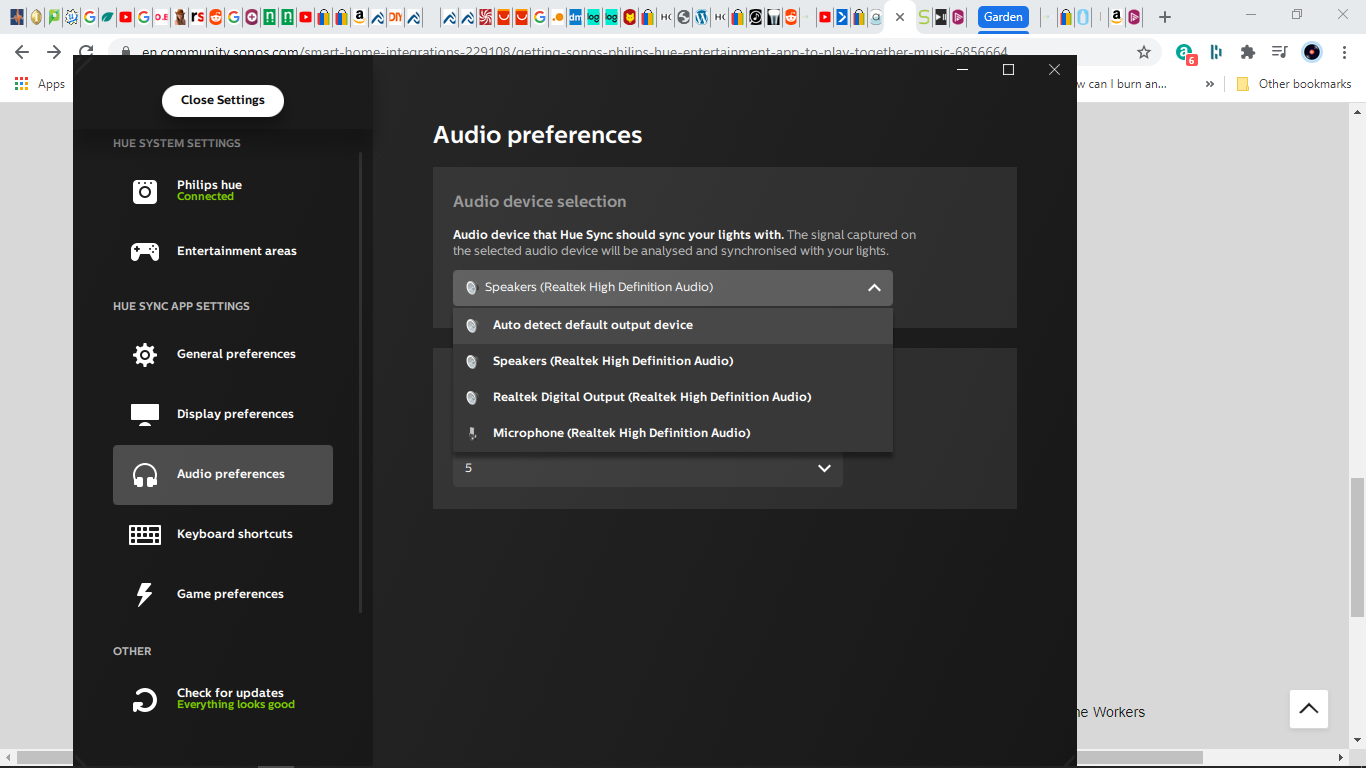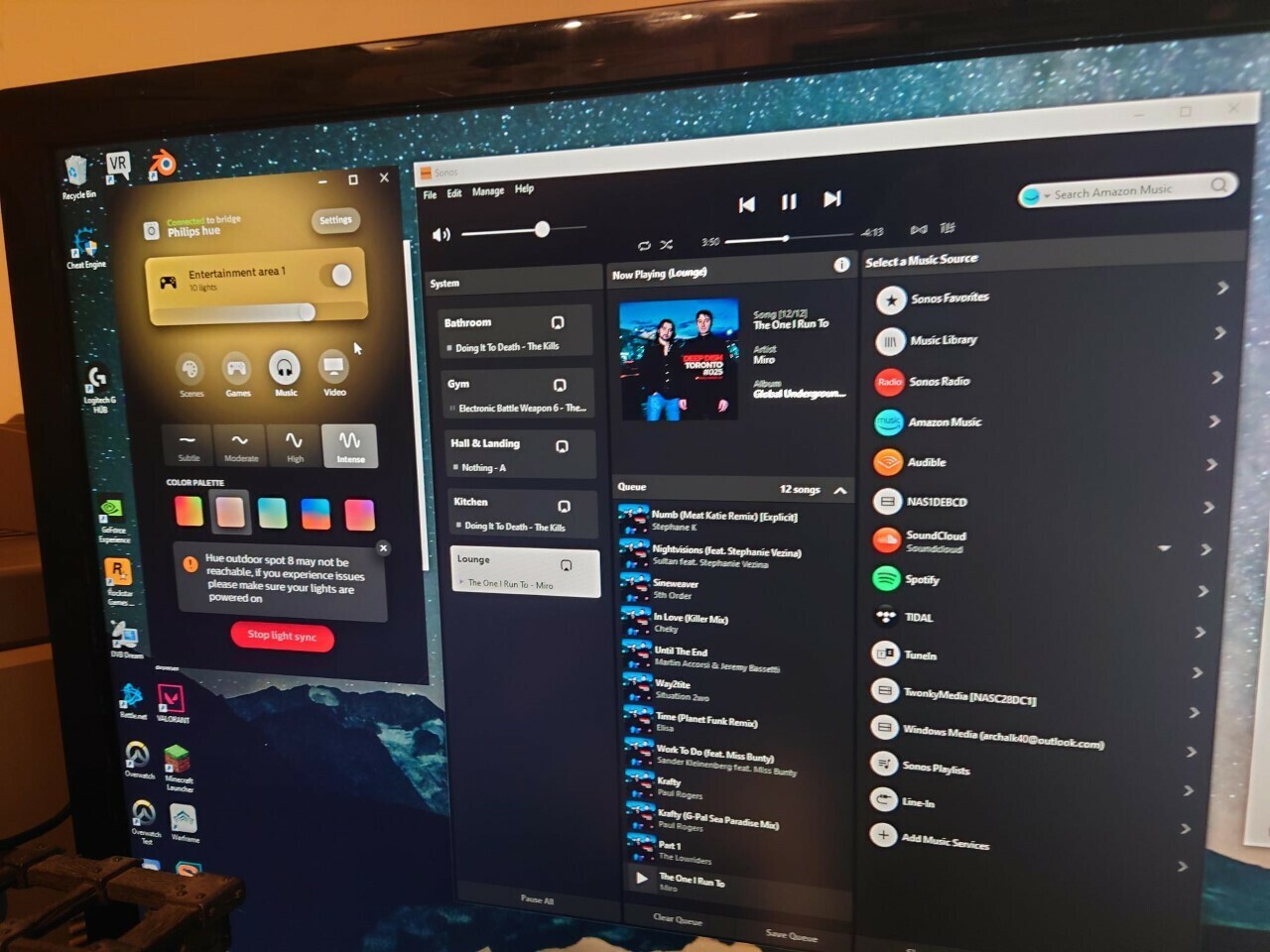Afternoon all. Have a reasonable size Sonos system built over time covering inside & garden on S2 now. All working a treat.
Over time I’ve acquired more of these Philips Hue lights than I realised and they are rather good on the whole. I have about 15 of them in the garden I think.
I’ve a need (later year - birthday event) to get the two working together.
I have the Philips Hue Entertainment App installed on Win 10 PC and it talks to all the lights very happily and I can create multiple entertainment zones.
But I do not know how to use Sonos as the source to get the Hue lights to do their thing i.e flash and change colour in time to the music. Probably sounds naff but looking to play the opening quiet 3 mins of The Prague Philharmonics version of Blue Danube outside with a gentle light performance before the remaining 7 mins to a professional firework display. Hey you not 60 every day and I met her in Vienna during this performance :-)
I guess I could buy and configure a Port and use a aux line in from that to the PC RCA’s and then use that to the Philips Hue App on the PC. Would that work?
Or is there a way any clever folks have to use the Sonos app on the PC to feed the Hue app on the same PC?
It sounds simple but then again I’m asking so maybe not so.
Either way, if anyway knows of a way (hardware or software) that would allow this facility to be made a reality I’d be really grateful to know of it.
Many thanks in advance





